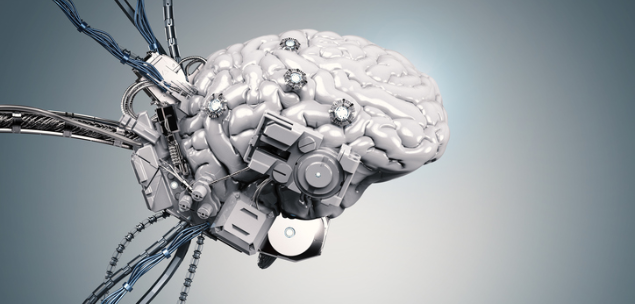Artificial Intelligence makes headlines every day: alternately promising to save the world, or destroy it completely. There’s no doubt that it holds exciting potential for businesses. A new global study by Capgemini found that 83 percent of firms surveyed reported that AI generated new roles, with three-quarters seeing an uplift in sales related to AI implementation.
Like any new technology, if AI can be demonstrated to show a competitive advantage, organisations are going to embrace it. Those that fail to do so will run the risk of falling behind. So how can your company look at getting into AI?
One initial issue is that nobody has a very clear definition of what artificial intelligence actually is. Machine learning is not necessarily AI in itself. For example, advanced algorithms such as book recommendations from retailers may be the result of machine learning, but they’re not necessarily AI. One definition we can perhaps use is AI starts at the point where a machine can make decisions based on contexts that are unpredictable, which can have unintended consequences.
Embrace machine learning
However we define it, machine learning is where a lot of AI starts. A “robot” (and in the majority of cases, we are really talking about software rather than hardware), like a human, needs to learn to develop its intelligence. It does this with data.
So the first step is to start harnessing your company’s data, and finding ways to turn it into insights. You need to be able to access and analyse what you have, if you’re to start teaching a machine to do this for you, and build algorithms to automate processes.
Personalisation is increasingly critical for consumers. We’ve seen the effectiveness of Amazon and other ratings and recommendations systems. Every business should be tapping customer behaviour and feedback and creating a personalised experience for them. Let’s say you’re a company that makes stools: start putting sensors on. Find out how people sit on stools, how they move on them and move them. Use this to build better stools.
Down the line AI will use that data to redesign more ergonomic models and recalibrate the settings on manufacturing machines to create them. It will then contact relevant customers with details of new models, accept payments, and ship them out via driverless vehicles. This is one area where AI is advancing rapidly, becoming a commercial reality in the next couple of years. There are estimates that driverless cars could reduce traffic fatalities by up to 90%, saving 300,000 lives per decades and USD $190 billion in healthcare costs associated with accidents.
Robotics process automation
Ideally, you’ll be eventually completely out of the loop while your stool factory runs itself. For now, businesses should start thinking about their workplace structure in readiness for AI. What tasks can be automated? What processes don’t need constant human input?
Here we’re talking about robotic process automation (RPA). This is using technology to allow employees to configure computer software or a “robot” to capture and interpret existing applications for processing a transaction, manipulating data, triggering responses and communicating with other digital systems.
What’s critical is that the bots are trained using demonstrative steps – they learn from and copy what a human is doing – rather than being programmed using code. This means that non-technical users can “teach” the bots to take over certain functions, just as they would with a new colleague, but in this case turning them into virtual workers.
The safety button
At the same time, some caution is needed. We’ve recently seen ASIC calling for more responsibility when it comes to the use of data and algorithms. ASIC chairman Greg Medcraft says that “no matter how far technology and innovation goes, and how intelligent machines become, we need to be conscious of accountability and where risk is placed”.
Tesla and SpaceX CEO Elon Musk, a pioneer of AI, has warned about safety with the increased use of AI. He claims it’s a “bigger threat than North Korea”, with an AI arms race most likely to cause World War III.
Companies should always build failsafes and kill switches in. Humans need to be able to override a machine’s decisions, because if the logic that leads to that decision is too complex for a human to follow, we can’t predict what the machine’s decision will be.
About the author
Simran Gambhir is the founder of technology and software solutions provider Ganemo Group. He was previously CTO for Flybuys and News Corp’s digital arm.

